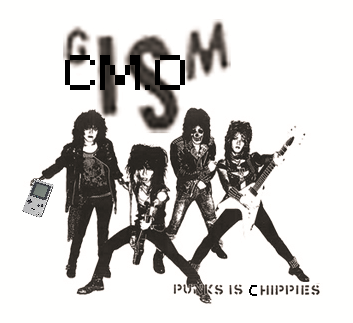I've always thought this too, but didn't know who else though the same. So here's my take on this.
I don't think 8-bit (or chiptune) has as much to do with the culture as it does the sound. I claim that there is one waveform in particular responsible for the entire feel and aesthetic of chiptune. How can one sound be responsible? Perhaps it has the same affect on everyone who hears it.
This sound is the pinnacle of the genre, and if we took this specific sound away, chiptune would cease to be itself. This is the pulse wave.
The pulse, with its abrupt changes in voltage, sharp shape, and ominous mood is made of all odd harmonics of the fundamental frequency. To my knowledge, nothing in nature can be modeled after this mysterious wave. It is the heartbeat of all digital electronics. The duty cycle can be altered, thereby changing the texture of the sound. Even though there are infinitely many duty cycles of this wave (every value between 0%-100%), we are familiar with the ones the gameboy can produce (75%, 50%, 25%, 12.5%)
50% Duty Cycle - The Square Wave
The square wave is special because it spends equal amounts of time being high and low. A perfect geometry. I propose that every American born on or after 1980 (perhaps earlier) has heard this sound at some point in their life whether it be driving to work, or microwaving pop tarts, playing video games, or whatever. It's the sound of digital life. What does it have to do with rock?
The guitar produces a sound far richer than the square wave, having even and odd harmonics; it is a warm tone. However, when the warm sound of the guitar is fed through an amp, and overdriven, the smooth sine wave oscillations are cut off at the tops, the even harmonics disappear, and what's left is our friend, the square wave.
Lots of alt rock, metal, punk depend on overdrive or fuzz to give it its harsh tone, but the square wave is embedded in all of it. Chiptune, when made with lots of squares, and structured in a certain way does have a teen rock, alt rock feel to it. But guitars aren't digital, and so, when chiptune is made to sound like computer music with lots of abrupt ON and OFF changes, it just sounds like video game music.
25% Duty Cycle - The Thin Wave
The 'Thin' is near and dear to most of us hardcore NES fans. This particular duty cycle has a richer harmonic content than the square wave because of its unbalanced geometry, and so many may argue that it sounds better than the square, but it is a matter of personal tastes. The game developer Capcom in their early days, made this waveform popular with their Mega Man series, the soundtrack employs it heavily. It is important to understand that most of 80's video game music was patterned after rock with it's progressions, riffs, and beats.
12.5% Duty Cycle - The Slim Wave
Finally, the 'Slim' with it's spacey almost nonexistent sound, sadly (I believe) doesn't have as much impact on the punk sound of chiptune as the other two duty cycles, but that doesn't mean that it doesn't give the genre personality.
In conclusion, I think there is a certain 'rebellious' tone to chiptune...this idea of taking what is meant to be used for playing games on and re-purposing it as a musical instrument. The lo-fi sounds have a certain distorted feel to them. But the pulse waves restore a sense of innocence to it all.
